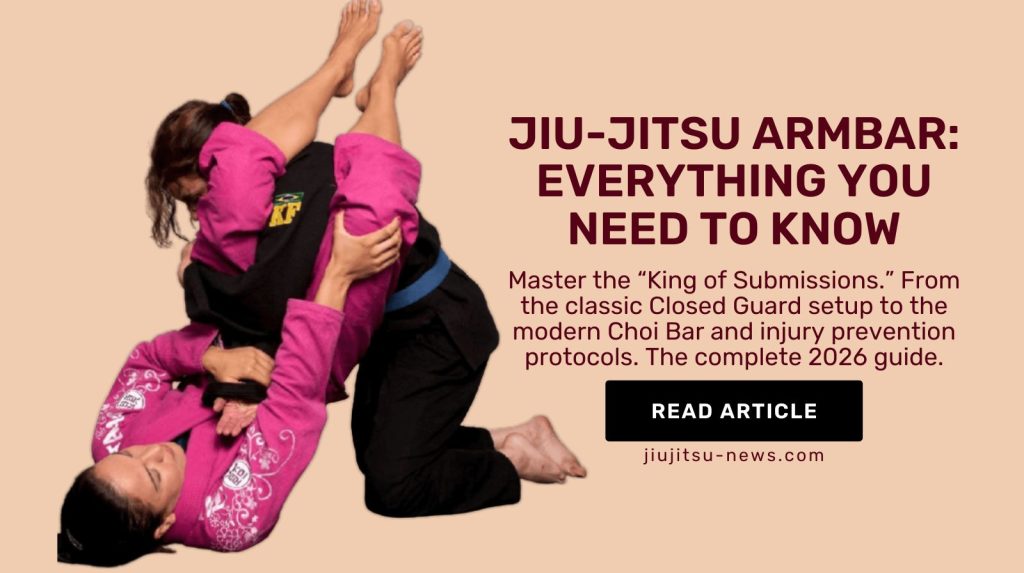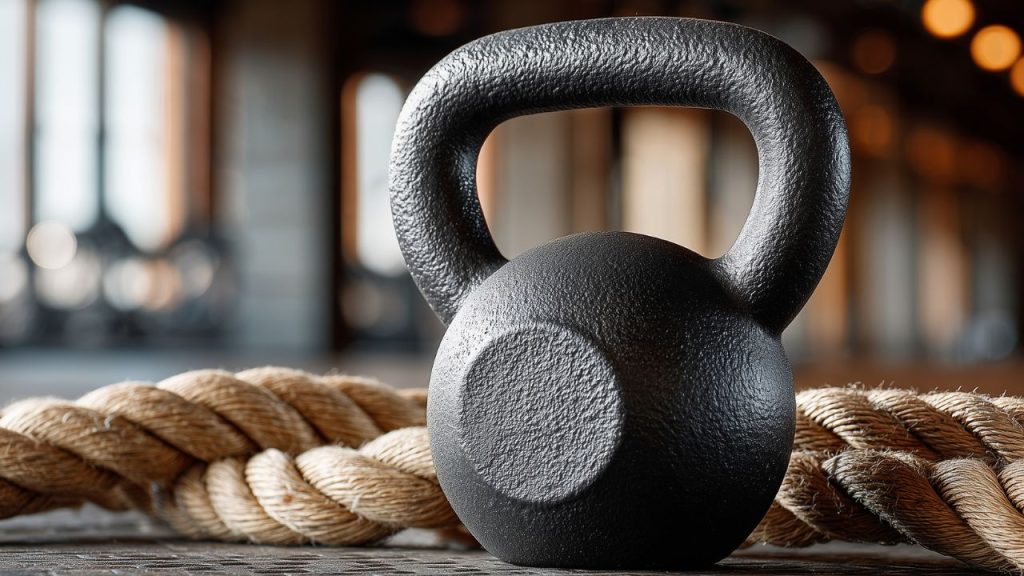Combat Jiu-Jitsu (CJJ): Rules, Origins & How It Bridges BJJ and MMA
Understand Combat Jiu-Jitsu—the grappling-first sport that allows open-palm strikes on grounded opponents. Learn the complete ruleset, EBI overtime, history, and how CJJ differs from traditional IBJJF and MMA competition.
Combat Jiu-Jitsu (CJJ) is a modern grappling ruleset that reimagines Brazilian Jiu-Jitsu by adding open-palm strikes on grounded opponents. Developed by 10th Planet founder Eddie Bravo in the early 2010s, CJJ has evolved into a formal competitive sport with international tournaments, professional athletes, and a dedicated rulebook.
Unlike traditional IBJJF Brazilian Jiu-Jitsu, which is purely grappling-based, Combat Jiu-Jitsu allows slap strikes to the face and body once an opponent is considered grounded. Unlike MMA, which features punches, kicks, elbows, and knees in four-ounce gloves, CJJ remains submission-focused with limited striking that only applies on the ground.
This comprehensive guide covers the complete history of Combat Jiu-Jitsu, detailed rule explanations, comparison with IBJJF and MMA, the EBI overtime system, and where to watch and train CJJ in 2025.
Key Insight: Combat Jiu-Jitsu was created to address a common criticism of modern sport BJJ: that pure grappling doesn’t reflect real-world self-defense scenarios where strikes must be defended. CJJ restores striking awareness while keeping submission technique as the primary win condition.
Where Did Combat Jiu-Jitsu Originate?
Technically, grappling with strikes traces back to early 20th-century Vale Tudo matches, where the Gracie family used Jiu-Jitsu against strikers and wrestlers. In these matches, Gracies would employ both submission techniques and strategic striking to win bouts—demonstrating that Jiu-Jitsu worked in truly open competition.
However, modern Combat Jiu-Jitsu as a codified sport was developed by Eddie Bravo around 2013. Bravo, a legendary 10th Planet Jiu-Jitsu founder and no-gi innovator, created CJJ specifically to “keep jiu-jitsu honest.” His philosophy was that removing striking from grappling created an artificial environment where techniques that would never work in a real fight became viable in competition.
The Eddie Bravo Invitational & EBI Evolution
Eddie Bravo Invitational (EBI) events debuted on submission-only rule variants starting in 2013, and CJJ-style matches appeared as special rules bouts. The first official Combat Jiu-Jitsu Worlds tournament took place in 2018, establishing CJJ as a distinct international competition format. Today, Combat Jiu-Jitsu Worlds runs annually with high-level athletes competing in divisions by age, weight, and belt rank.
The sport appeals to two distinct athlete populations: pure BJJ specialists who want a more realistic self-defense environment, and MMA fighters who want to compete in a grappling-heavy format while still using some striking.
Combat Jiu-Jitsu vs MMA: Key Differences
While CJJ and MMA both involve striking, they operate under fundamentally different philosophies. MMA is a comprehensive combat sport that integrates multiple martial arts. CJJ is submission-first grappling with limited striking.
| Aspect | Combat Jiu-Jitsu | MMA |
|---|---|---|
| Primary Focus | Submissions (grappling-first) | Mixed martial arts (multi-disciplinary) |
| Standing Strikes | Not allowed | Punches, kicks, elbows, knees allowed |
| Ground Strikes | Open-palm slaps only (face & body) | Closed fists, elbows, sometimes ground-and-pound |
| Glove Type | None (bare-handed palm strikes) | 4oz MMA gloves or larger |
| Match Format | 10 minutes regulation + EBI overtime | 3 rounds (5 min) to 5 rounds (5 min) with judges’ decisions |
| Winning Conditions | Submission, knockout, EBI escape speed | Submission, KO, TKO, judges’ decision, split decision |
Why CJJ Appeals to Both BJJ and MMA Athletes
- For pure BJJ athletes: CJJ provides a bridge to self-defense realism without the full commitment to MMA training. You can test your grappling against strikes without learning punching combinations.
- For MMA fighters: CJJ lets you compete in a grappling-heavy format where you can still use strikes (palm strikes specifically) without needing full MMA training. It’s an intermediate step.
- For wrestlers/judoka: CJJ welcomes any grappler; the striking element doesn’t require striking expertise—it rewards grappling primarily.
Combat Jiu-Jitsu Rules: Complete Breakdown
Combat Jiu-Jitsu rules are designed to encourage aggressive grappling while discouraging stalling and inactivity. Understanding these rules is essential if you plan to compete or train CJJ.
Match Duration & Structure
- Regulation: All matches consist of one 10-minute round.
- Overtime (EBI): If no submission occurs in regulation, matches go to EBI overtime rules (explained in detail below).
Striking Rules (Core to CJJ)
- When allowed: Strikes are only allowed when at least one competitor is considered grounded.
- Type: Open-palm strikes (slaps) only. Closed-fist punches, elbows, knees, and kicks are strictly prohibited.
- Target areas: Strikes can be directed at the face and body. Head strikes are legal once grounded.
- Grounded definition: A competitor is considered grounded when their butt, hip, or both knees touch the mat. Standing on hands is not grounded (similar to IBJJF rules).
Strike Strategy: In CJJ, striking isn’t about damaging your opponent—it’s about controlling the distance and pace of the match while grounded. Open-palm slaps distract, set up transitions, and keep opponents honest about their guard pressure.
Grounding & “Get Down” Rule
- Standing phase: Matches start standing. If both competitors remain standing and engage in light grappling for about one minute without a clear takedown, a horn sounds.
- “Get down”: When the horn sounds, the referee stops action and implements a positional reset to move the match to the ground faster. A coin flip determines who chooses between two options: starting with double underhooks in a seated butterfly guard, or starting on the bottom.
- Purpose: This rule prevents endless stalling in the standing position and ensures the match moves to the striking/grappling phase quickly.
Purgatory Position
- Definition: Purgatory is when one competitor is grounded and the other stands without clearly engaging a guard or leg entanglement position.
- Allowance: Competitors are allowed approximately 10 seconds of purgatory per instance, with a total match limit of around 30 seconds total purgatory time.
- Enforcement: After purgatory time expires, the referee enforces action—typically calling a takedown or repositioning to restart engagement.
- Purpose: Prevents one athlete from standing passively while the other is grounded, discouraging stalling tactics.
Submissions & Wins
- All submissions are legal in CJJ (including leg locks) unless the event specifies age or belt-level restrictions.
- Wins by submission: Tap = match over. No tapping = no submission.
- Wins by knockout: If someone is truly knocked unconscious from strikes, the match is stopped and ruled a KO. This is rare in CJJ due to the nature of open-palm slaps.
- Wins by EBI escape speed: If no submission in regulation or EBI overtime, the fighter with the fastest total escape time across all overtime rounds wins (explained below).
EBI Overtime System (The Tiebreaker)
EBI (Eddie Bravo Invitational) overtime is a revolutionary format where neither fighter gets a judges’ decision. Instead, they alternate attacking from set positions and earn wins through speed of escape.
EBI Overtime Format
- Attacking positions: Competitors alternate between two positions per round: (1) back control with seatbelt grip and hooks, or (2) spider web armbar position.
- Time limit per position: Each attacker gets 2 minutes to secure a submission from their chosen position.
- Multiple rounds: Matches can go up to three rounds (six total offensive/defensive exchanges), though most are decided in the first or second round.
- Escape metric: If neither competitor submits during their offensive time, whoever escapes their opponent’s position fastest (across all their rounds combined) is declared the winner.
- Fairness: This system eliminates judges entirely and makes every second count—stalling or running down the clock helps no one.
Combat Jiu-Jitsu vs IBJJF BJJ: Key Differences
While both CJJ and IBJJF BJJ are grappling-focused sports derived from Brazilian Jiu-Jitsu, they have distinct rule philosophies and win conditions.
| Rule / Feature | Combat Jiu-Jitsu | IBJJF BJJ |
|---|---|---|
| Striking | Open-palm strikes allowed on grounded opponents | Strikes strictly prohibited (grappling only) |
| Points System | No point scoring; submission or escape speed wins | Points awarded for takedowns, guard passes, mount, etc. |
| Overtime / Tiebreaker | EBI overtime with escape speed metric | Judges’ decision (points scored in regulation) |
| Gear | No-gi (rash guard & shorts) | Gi (jacket, belt, pants) or No-Gi (rash guard & shorts) |
| Match Duration | 10 minutes + possible EBI overtime | 5-10 minutes depending on belt level |
| Restricted Techniques | Minimal restrictions; all submissions legal | Many techniques restricted by belt level (heel hooks, slicers, knee reaping) |
Note: IBJJF recognizes that CJJ and traditional BJJ are different sports. Athletes who compete in CJJ cannot directly transfer tournament records to IBJJF rankings, and vice versa. They’re distinct ecosystems.
Where to Watch & Train Combat Jiu-Jitsu
Watching Combat Jiu-Jitsu
UFC Fight Pass hosts an extensive catalog of past and upcoming Combat Jiu-Jitsu Worlds tournaments, plus highlights and special CJJ superfights. Combat Jiu-Jitsu Worlds now runs annually with stacked brackets from athletes worldwide, featuring matches in multiple weight classes and belt divisions.
EBI-branded events (which often feature Combat Jiu-Jitsu or submission-only formats) also broadcast on various platforms including YouTube and specialized grappling streaming services.
Training Combat Jiu-Jitsu
CJJ is less widely available than traditional BJJ, but interest is growing. Here’s where to find it:
10th Planet Jiu-Jitsu Schools
- Eddie Bravo’s 10th Planet network operates worldwide and offers regular CJJ-style training (no-gi with striking simulation).
- Many 10th Planet locations incorporate open-palm strikes into regular rolling to familiarize athletes with CJJ-like scenarios.
- Use their official locator to find a school near you.
Gracie Academy & Traditional BJJ Schools
- Some Gracie Academy locations offer “Fight Simulation” or “realistic self-defense” classes that include light striking in rolling.
- Athletes train with light MMA gloves (1-2oz) or bare hands and practice defending against strikes while executing submissions.
- Not officially “Combat Jiu-Jitsu,” but functionally very similar for training purposes.
MMA Gyms
- Most quality MMA gyms have dedicated Jiu-Jitsu classes that naturally incorporate striking awareness during sparring.
- These aren’t formal CJJ competitions, but they train the same skill set: grappling while aware of strikes.
- Athletes can transition to formal CJJ competition after building confidence in this environment.
Getting Started in CJJ
- Join a local 10th Planet school or MMA gym if available; start with foundational BJJ first.
- You’ll need: rash guard (gi not used in CJJ), shorts or spats, mouthguard.
- CJJ training is safer than MMA because open-palm strikes are less damaging than closed-fist punches, but mouthguards are still essential.
- If no CJJ gym exists nearby, traditional no-gi BJJ with an emphasis on self-defense and striking awareness provides excellent preparation.
Conclusion: Is Combat Jiu-Jitsu Right for You?
Combat Jiu-Jitsu bridges the gap between pure sport BJJ and MMA. It honors Jiu-Jitsu’s roots in Vale Tudo (anything goes) competition while maintaining submission technique as the primary focus. CJJ is ideal if you want:
- A more self-defense-realistic training environment than traditional IBJJF BJJ
- Striking awareness without committing to full MMA training
- A submission-focused format where superior grappling still wins (unlike MMA where striking prowess matters)
- An innovative ruleset (EBI overtime) that rewards athleticism and technical proficiency equally
CJJ continues to grow in popularity, and more competitions, online resources, and training academies are emerging each year. Whether you’re a BJJ competitor looking to expand your skillset or an MMA athlete wanting a pure grappling format, Combat Jiu-Jitsu offers a unique competitive platform.
Final Thought: Eddie Bravo’s vision of adding strikes to Jiu-Jitsu has proven successful not because slaps are devastating, but because they return the sport to its historical roots—forcing grapplers to defend themselves against all-around attacks while mastering submissions. That’s the essence of Jiu-Jitsu as a self-defense art.
Last updated: December 2025. Combat Jiu-Jitsu rules and competition information current as of publication.






